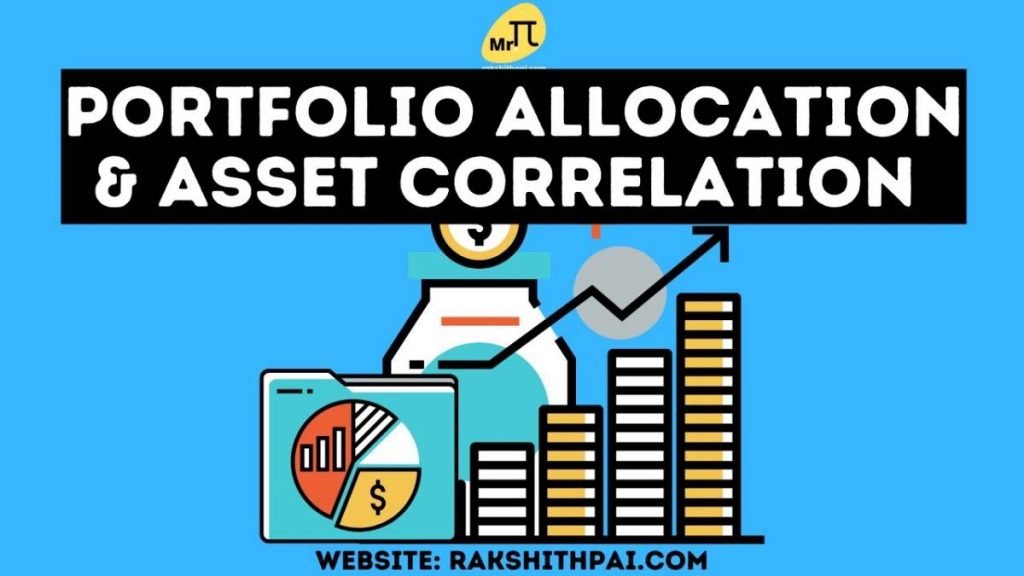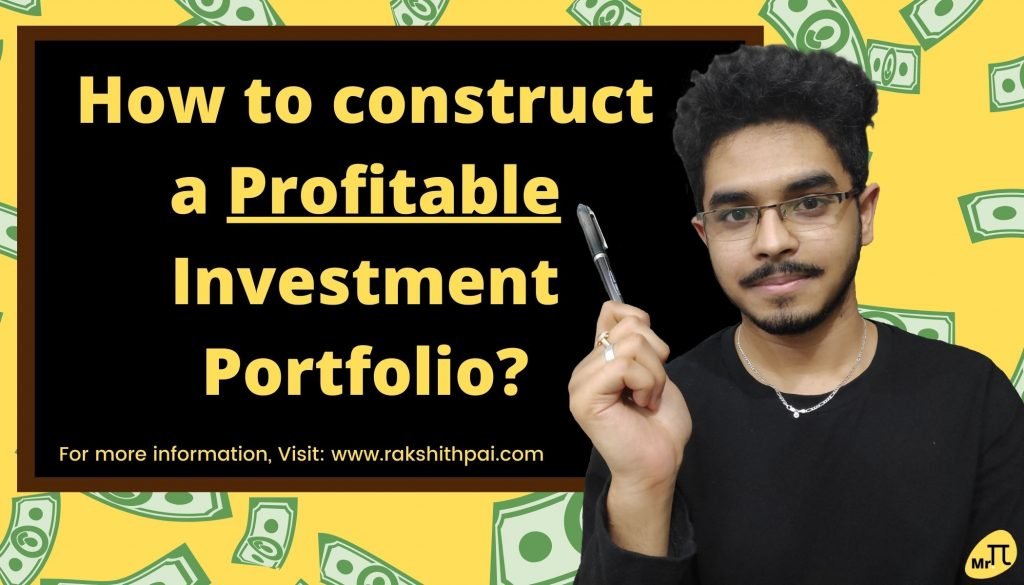Table of Contents
What Is an Investment Plan?
An investment plan is a set of financial steps and a strategy to achieve your investment objectives. Due to a lack of knowledge, many people put off making their first investment. Those that get into the market without a plan often end up with a loss. Investment plans help consumers make more educated choices and increase the likelihood of positive returns.
Have you heard the quote, “Well planned is half done?” It’s the same with investing.
Execution is the other half of the planning process, and it is essential to the success of anything you do. Investors might take into account more factors while employing a strategy. The potential investor can then choose how much of their available cash they can devote to the venture without jeopardizing their ability to satisfy their other financial commitments.
Further, before making an investment, one must consider and account for all potential dangers. Hence, before deciding on a portfolio of specific assets, a smart investor would think about all of their options.

How Do You Make an Investment Plan?
In order to draft the perfect investment plan, you must understand the type of investor you are.
Usually, it is suggested to get professional help when drafting an investment plan. But, here are some of the key factors you need to know.
Financial Situation
Before you can plan anything, you must know your current financial situation. How much money do you have and what amount of debt do you owe?
Also, evaluate your income, savings, assets, and tax obligations to determine if investing in the stock market and other risky assets is a good idea for you for the time being.
Especially for long-term investments, you may need to put up a lot of money upfront and have a lot of patience and discipline.
Risk Tolerance
Think about how comfortable you are with taking risks; a new investor may be more willing to do so than an experienced one, as the former has more time to recover from setbacks.
Do not go with the old adage of assuming your risk by your age. It is actually the wrong thing to do. You must take a risk only as far as you are comfortable. Your age has nothing to do with the amount of risk you can take. Obviously, with old age, it is suggested to avoid stock investing. But, what do you say about Mr. Warren Buffett?
So, instead of thinking about your age and investing, It’s suggested that you think about your financial situation and invest.
Time
Create time-bound objectives. Determine the desired results and the time frame by considering your current financial standing and your level of comfort with risk. The investing phase is a time when careful consideration should be given to your choices, and having a time-based strategy can help.
Pro tip: Invest in long-term assets for wealth creation. Trade with the trend.
Understanding Time Value of Money (TVM):
Investment
As said earlier, assess your current financial condition, your risk tolerance, and your investing goals before settling on an investment type. You may benefit from the advice of a financial expert. He/she will guide you based on your risk profile.
For example, you may be in your mid-30s with the aim of owning a home by the time you are in your 50s. Since you are in your mid-30s, it is generally accepted that you earn a moderate to a high salary. So, during this 15-year period, you can invest aggressively in equity-based assets and earn a 12 to 15% return annually.
But, is this the program suggested for someone nearing retirement? The answer is no!
Because your investment is chosen by the financial planner based on your present financial condition.
Monitoring
After putting money into an investment, keep tabs on its performance over time so you may make any required adjustments. When you invest for the long term, you don’t have to keep an eye on it as much as when you invest for the short term. If you hire a professional financial planner, he/she does all the work for you.
On the other hand, if you want to do it all by yourself, Then do subscribe to our YouTube channel where I give tips and suggestions to help you get your finances right.
Objectives of Investment Plans:
There are three (3) main objectives of Investment Planning; And, they are Increasing Income, and safely Investing in Growth Assets.
Income
How can one concentrate on investing if income isn’t high enough? If you earn just enough to lead a normal life, you’ll never be able to save enough to invest.
The best solution for earning more income is to earn via side hustle. We must make efforts to earn passive income. For more information, CLICK HERE!
10 Best Ways to Make Passive Income in India – 2022
Safety
Financial stability is what we seek in investment plans. The best ways to protect yourself and your loved ones are to not see the light of financial difficulties and to have a well-thought-out investing strategy. When compared to other, more risky options, a good investment strategy will always give you peace of mind about your finances.
Growth
Investment plans are the ultimate growth one can make the most of in their day-to-day life as well as the time ahead. Investment plans are one of the key tools to ensure financial stability in the future. They are the perfect growth engines that give the desired results with the passage of time and help investors enjoy significant returns in the long run.
Key Features of a Good Investment Plan:
- The safety of principals is the primary objective of a Good Investment Plan.
- It must be Simple & Easy to Understand
- Economical and available at least cost & expenses
- It must be Easy to Manage. Such investment must be hassle-free.
- A good Investment Plan must offer Capital Growth.
- It must be a Tax Efficient Scheme.
Types of Investment Plans:
There are primarily three types of investment strategies. Investment strategies may be sorted into distinct buckets according to the level of risk they pose. The potential for loss of capital is an important consideration for every investor, so it’s best if they know the risk they are taking before putting money into an investment.
Investing strategies can be put into three main groups based on how much risk they involve:
Low-Risk
Low-risk investing programs are a good bet for individuals looking for a safe and secure way to increase their money. If you want a long-term, secure investment with a high rate of return and low or no portfolio volatility, a systemic investment plan is a way to go.
These assets include the PPF, gold, bank fixed deposits, the National Pension Scheme, and many others. All of these are good, low-risk ways to invest.
Mid-Risk
Investment plans with a medium level of risk are those that aim to produce a diverse and balanced portfolio. This sort of investment plan does double duty by providing both growth potential and protection against market fluctuations within certain limits.
By spreading their money out among a range of debt and equity instruments, investors in medium-risk plans may still earn a respectable rate of return while taking on just a small amount of risk. Monthly income plans, arbitrage funds, and hybrid-debt-focused funds are examples of investing strategies with a medium risk profile.
Equity Bond Portfolio Mix is the most widely used investing strategy will allocation into assets being mostly 50-50.
High-Risk
Plans for investing with a high degree of uncertainty are considered high-risk. On the other hand, there is a good probability that these investment strategies will provide enormous profits in the long run.
This type of investment plan is best for people who are willing to take on a lot of risks and want to focus on long-term capital growth. Direct Equity & Cryptocurriencies are the best examples of such investing strategies.
For more information regarding the best investment options available for Working class Indians, you must read this article, CLICK HERE!
Best Investment Plans in India for Middle Class 2022
Benefits of Investment Plans:
The following are the major benefits of an Investment Plan;
Ensure the Future
The peace of mind that comes from choosing a good investment plan is like Financial insurance for yourself and your family members.
With such comprehensive protection at your side, it would be a great addition to guarantee your family’s financial stability. Your loved ones won’t have to worry about meeting basic requirements while trying to make ends meet if something tragic were to happen to you.
Future Goals
Everyone has something they hope to achieve. It might be for anything from a child’s college fund to your own retirement savings. The lock-in term that comes with an investment plan is a significant element that may help you save money for your future.
A well-thought-out financial strategy may help you achieve any objective in life, no matter how large or small.
Save on Taxes
One of the major upsides of investment plans is the tax advantages they provide. Sections 80C and 10(10) of the Income Tax Act of 1961 both provide tax breaks for insurance and investment products.
For more information on the tax benefit offered, you must read this article, “15 Best Ways to Save Income Tax in India”.
Wealth Creation
Saving, Investing, and repeating the process is a great strategy to start building your money. The correct investment product can also increase the sum available for investment.
A person can amass money with relative ease with regular and focused Investing. Putting together a safety net is simple if you invest in something that generates large returns. And most importantly, the instrument you own must be something that you understand or is professionally managed on behalf of you.
Conclusion:
For most investors, a perfect investment plan is rarely as simple as choosing between safety, growth, and financial gains. The optimal solution is likely to be a proper combination of the three.
And keep in mind that this too will evolve over time. If you’re just starting out in your profession and have a high tolerance for risk, then it might be the best time to pursue capital gains by investing in direct equity. You may want to reduce your exposure to risk as you get closer to retirement so that you can protect your retirement corpus.
At any given time, however, your primary objective is to safeguard your capital. Then comes the expected return on investment, over and above the running inflation rate.
For More Information, Check this Video:
Disclaimer: All the information on this website is published in good faith and for general information purposes only.









